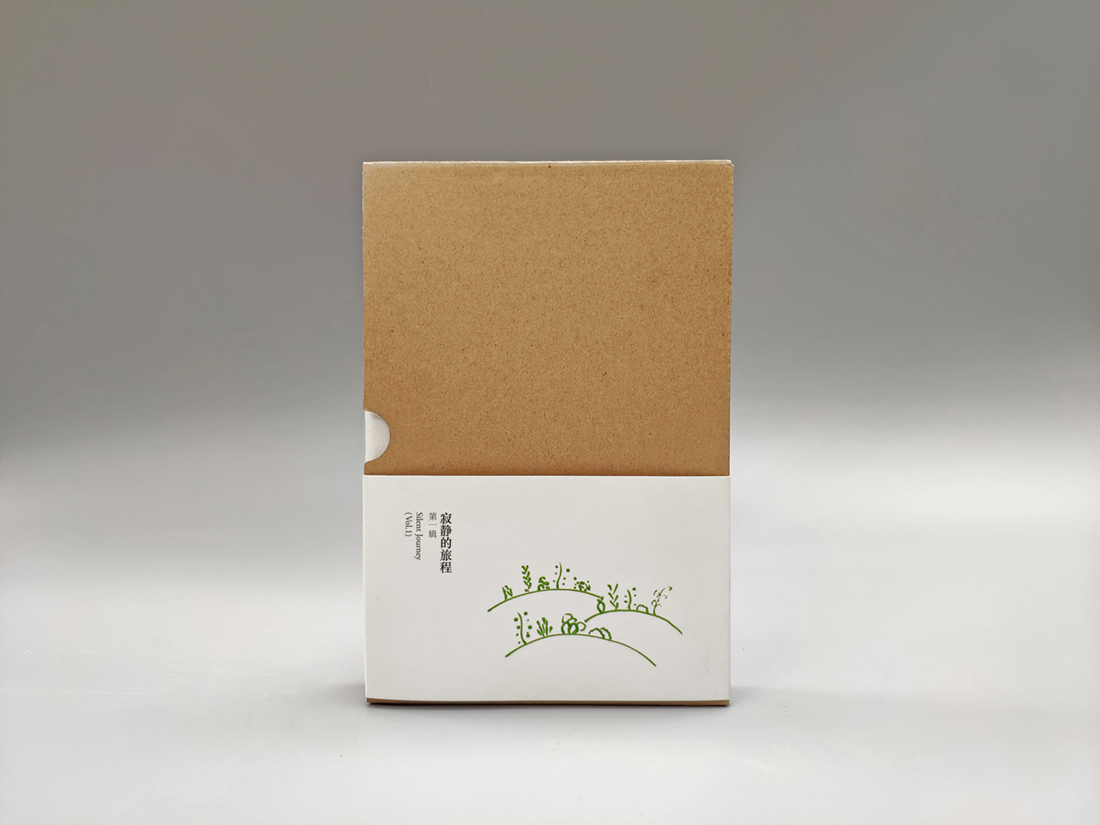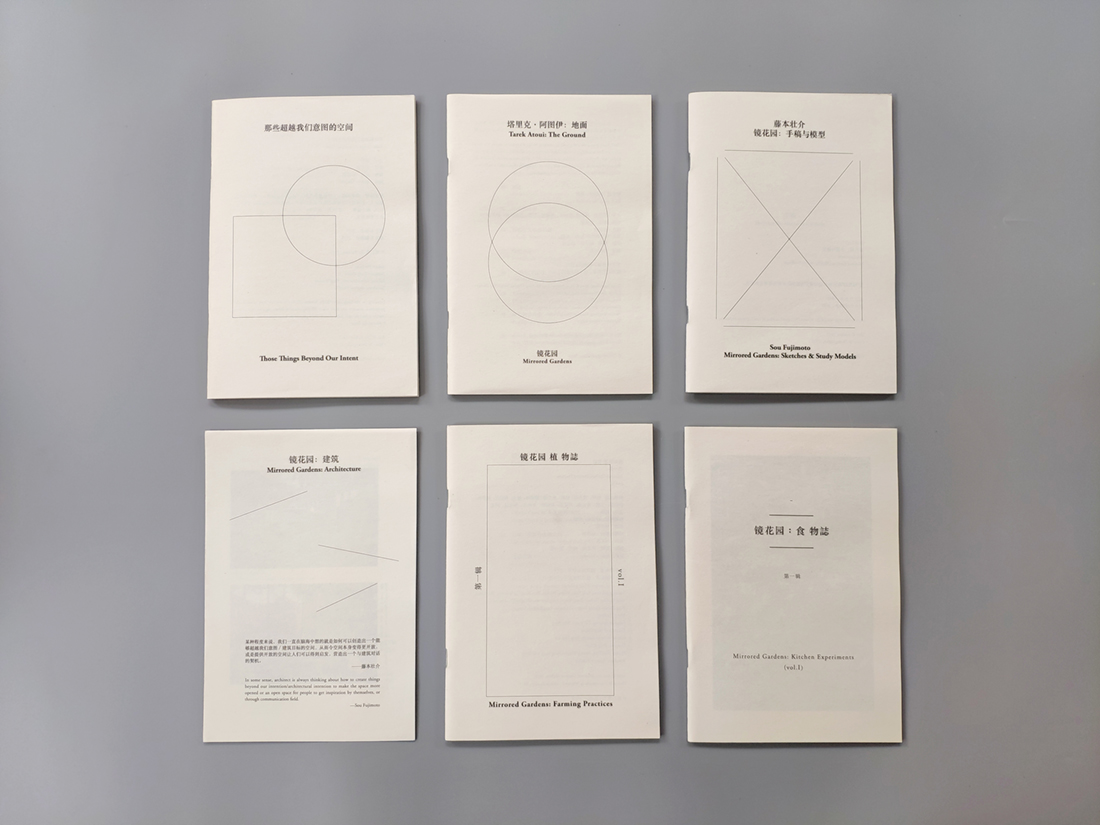
 The Pavilion: Silent Journey (Vol.1), 6 in 1.
The Pavilion: Silent Journey (Vol.1), 6 in 1.
If we could consider the architectural spaces to be models of thought, then the space of Mirrored Gardens attempts to be a reciprocal reflection and measurement of topography, air, water, and light, as well as of the people who enter the space. Just like the emphasis in quantum mechanics on the idea that the observer necessarily becomes an organic component of the system, when we put ourselves in a space, we naturally cannot avoid assuming a sense of responsibility toward that space.
More than a physical formation of the landscape, the topography here should be understand as being part of a cultural topology which allows us to imagine the potential for a “homeopathic architecture” (an architecture that conforms to human scale of perception).
—Excerpts from Those Things Beyond Our Intent of Silent Journey (Vol.1),P42
Those Things Beyond Our Intent



[ Contents ]
02 为什么我们凝视植物
07 Why We Look at Plants
11 那些超越我们意图的空间
24 Those Things Beyond Our Intent
38 相忘于山水
42 Forgotten in Shanshui
Relying on the situation of the Mirrored Gardens, this set of books takes a series of daily happenings and observations related to the spatial practices of the Mirrored Gardens to discuss how to carry out thinking and practices on aspects of human and nature, individual and reality, collaboration and openness. “Every tree in a forest could be an autonomous individual, and the forest is an outcome of collaboration between individual activities.” In the conversation between artist Koki Tanaka and architect Sou Fujimoto, “forest” is used as a metaphor for an ecosystem that can be potentially formed through collaborations between individuals, as well as a perceptual basis of an ecosystem. Sou Fujimoto stated, “architectures designed by architects need to reflect on how to strategically create this kind of complex and diverse system and embrace the openness of the real world to which the architectures should make connections.” “I’d like to take all sorts of things into considerations, but at the end they should be translated into a shape, or a space in order to develop an architectural or spatial form. If so, we will be able to perceive these different things through our experiences in a space, which might take more time, but if you’re willing to keep searching you’ll notice the different characteristics of this space.” From a series of concept hand drawings and model testing by Sou Fujimoto on the Mirrored Gardens, we can learn in details about the processes of exploring such forms of space.
Sou Fujimoto
Mirrored Gardens: Sketches & Study Models



[ Contents ]
Chapter 1 Sketches for Mirrored Gardens
Chapter 2 Mirrored Gardens: Blurring Boundaries (A Conceptual Sketch)
Chapter 3 Study Models for Mirrored Gardens
Mirrored Gardens: Architecture



Mirrored Gardens: Farming Practices and Mirrored Gardens: Kitchen Practices intend to enter the perceptual interface between human and nature from their respective perspectives of farming and cooking. “To see the soil as a network system where life exists means that it doesn’t fit the simple causal logic of survival like that of the generally-spoken ‘food chains’, instead it requires us to more holistically reflect upon the kind of organic ‘me in you, you in me’ evolutions of the living organisms in soil, which also indicates that, if we are to reflect on the rhizomatic system of the soil as a whole, the dynamics it fosters could doubly reciprocate all living things that live within it.” Expanding from the comprehension of the soil to understanding the nature and garden spaces based upon soil, “the Chinese gardens as creative spatial activities tending towards nature, as a transformation of the ‘philosophy of shanshui’ into reality, are not just a quest for the landscape. The existence of gardens is as much for a cultivated nature as for the people who live within it on a daily basis to be cultivated by nature in return. It reflects with awareness an ideal state which the human should or could achieve.”
Mirrored Gardens: Farming Practices



[ Contents ]
02 Xu Tan: 2013-2113
05 George Chan and the Disappearing “Mulberry Dyke Fish Pond”
08 Soil, Compost and the Wok of the Earth
10 Farming Practices
25 园林等待:在种植和园艺之间
28 Gardens Await: Between Farming and Gardening
33 引园
36 Quotation Garden
Mirrored Gardens: Kitchen Experiments



[ Contents ]
02 Koki Tanaka: How to Make a Coffee (at Mirrored Gardens)
07 The Scent of Green Papaya
09 Asiatic Wormwood Glutinous Rice Cake
11 Honeysuckle Flower Congee
12 Tarek Atoui: Ratatouille
27 Fresh Mint Tea
29 Purple Perilla Green Plum Drink
33 Pesto Sauce
34 The Book of Kitchen
Tarek Atoui: The Ground very much has characteristic of its own in this series of books, meanwhile bridging, supporting and expanding the contents of the other books. As a sound artist, musician and composer, Tarek Atoui’s “The Ground” was inspired by a long-term observation of the human activities in the agricultural context of the Pearl River Delta. If this “soil for sounds” could inspire people’s imaginations, not only bring daily “rehearsals” further, but also connect to the deepening and unfolding of different moments and different life experiences in a broader manner from experiences of the “here and now,” then perhaps it will grow itself into a “music score” whose abstractness could let multiple unexpected forms of rehearsing be derived from it. Composition and place, people in the place, daily encounters of the people and learning life experiences are no longer separate issues, and the so-called “instrument” and all the important factors related to “composition” are not separate from each other either. It is itself part of the ecosystem of sound that can be renewed and circulated, learned from oneself as well as each other.
Tarek Atoui: The Ground



[ Contents ]
03 About The Ground
04 Observations
08 Instruments and Space
14 A Score Written in the Air
21 Notes on the Listening (P.45)
26 The Necessity of Being Soilization
28 A Memorandum: For a composition which has not been named
33 Participated Musicians
36 Spin Library-An Archive Towards Nothingness
(The excerpts above are taken from the relevant chapters in the book.)
The Pavilion: Silent Journey (Vol.1)
Concept: The Pavilion
Editors: Rain Mountain, Pang Yeekuen
Designer: Feng Zhiyin
Publisher: The Pavilion
Year: 2019
Language: Chinese, English
Size: 14.5×21cm
Series: 6 in 1
Page: 224
More on >>
Photo by Zhou Zhilei
Image and Text: the shop, ©Authors, the shop, 2019